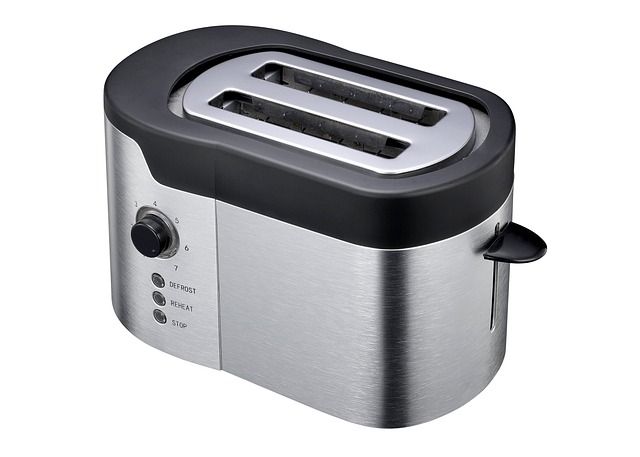Elevating Excellence: Strategies for Maximizing Customer Satisfaction and Quality Work
Customer satisfaction is a key metric for businesses to understand how well their products or servic…….

Customer satisfaction is a key metric for businesses to understand how well their products or services align with customer expectations. Companies gather this data through various channels like surveys, comment cards, and service interactions. They use KPIs such as Net Promoter Score (NPS), Customer Satisfaction Score (CSAT), and Customer Effort Score (CES) to measure sentiment and identify areas for improvement. By analyzing these metrics, businesses can refine their strategies to enhance customer experiences, aiming for higher satisfaction rates and ensuring they stay responsive to evolving needs. A customer-centric approach is maintained by actively collecting feedback, using it to inform process improvements and service quality enhancements, and providing staff with effective communication and problem-solving training. Advanced technologies like AI and machine learning offer personalized experiences and streamline operations, while real-time sentiment analysis allows companies to promptly address customer concerns, fostering loyalty and advocacy. This data-driven, responsive strategy is vital for businesses aiming to sustain high satisfaction levels in a competitive marketplace that increasingly values customer input and technology integration.
In a landscape where customer satisfaction reigns supreme in assuring quality work, businesses are increasingly attuned to the nuances of service excellence. This article delves into the multifaceted approach required to achieve and sustain high satisfaction ratings. We will dissect the pivotal role of customer satisfaction metrics in gauging client contentment, explore robust strategies tailored to elevate these ratings, and emphasize the importance of staff training that centers on customer needs. Furthermore, we’ll uncover how implementing effective feedback systems can drive continuous improvement, and examine the transformative impact of technology on service delivery. Finally, we’ll discuss the real-time monitoring of customer sentiments to ensure a responsive approach to maintaining high satisfaction levels, thereby cementing quality work as an integral component of business success.
- Understanding Customer Satisfaction Metrics
- Strategies for Achieving High Satisfaction Ratings
- Training Staff to Prioritize Customer Needs
- Implementing Feedback Systems for Continuous Improvement
- Leveraging Technology to Enhance Service Delivery
- Monitoring and Responding to Customer Sentiments in Real-Time
Understanding Customer Satisfaction Metrics

Customer satisfaction metrics are quantifiable measures used to assess how products or services provided by a company meet or surpass customer expectations. These metrics are crucial for gauging the effectiveness of a company’s offerings and are often derived from direct feedback through surveys, comment cards, or interaction with customer service representatives. By analyzing these metrics, businesses can identify areas where they excel and where there is room for improvement. Key performance indicators (KPIs) such as Net Promoter Score (NPS), Customer Satisfaction Score (CSAT), and Customer Effort Score (CES) are commonly employed to capture customer sentiment. NPS measures the likelihood of customers promoting a company’s product or service, CSAT evaluates satisfaction with specific events or transactions, and CES assesses how much effort customers believe they had to exert to resolve their issues. Understanding these metrics allows companies to tailor their strategies to enhance the customer experience, thereby driving higher satisfaction ratings and ensuring the delivery of quality work that aligns with customer expectations. Regular monitoring and analysis of these metrics enable a company to adapt quickly to changing customer needs, fostering a responsive and customer-centric approach to business operations.
Strategies for Achieving High Satisfaction Ratings

To cultivate high customer satisfaction ratings, businesses must implement a suite of strategic practices that prioritize the customer experience at every touchpoint. One effective approach is to actively solicit feedback through surveys or direct conversations, allowing customers to voice their opinions and feel heard. This data should be meticulously analyzed and used to inform process improvements and service enhancements. Additionally, training staff in excellent communication and problem-solving skills ensures that customer interactions are positive and productive. By empowering employees with the knowledge and tools necessary to address concerns effectively, companies can foster a reputation for quality work and superior customer care. Furthermore, consistency in service delivery is key; standardizing processes across all platforms ensures that every customer receives the same high level of satisfaction. Companies that consistently deliver on their promises and exceed customer expectations are more likely to achieve and sustain high satisfaction ratings over time. Implementing a robust feedback loop where customer input directly informs service quality improvements can further enhance satisfaction levels, creating a virtuous cycle of continuous improvement and higher customer satisfaction scores.
Training Staff to Prioritize Customer Needs

Companies across various sectors recognize the importance of equipping their staff with the skills necessary to prioritize customer needs effectively. Training programs that emphasize active listening, empathy, and problem-solving are instrumental in enhancing the customer service experience. These training initiatives often include role-playing exercises, where employees practice responding to a range of customer scenarios, allowing them to anticipate and address actual customer concerns with greater confidence and competence. By fostering an environment where staff members understand and value the customer’s perspective, businesses can ensure that their services are tailored to meet individual requirements, thereby elevating overall satisfaction levels. This focus on customer-centric training not only improves immediate interactions but also contributes to long-term loyalty and positive brand association, as customers consistently receive attentive and responsive service that exceeds their expectations.
Implementing Feedback Systems for Continuous Improvement

Businesses today recognize the importance of leveraging customer feedback to enhance service quality and ensure high satisfaction rates. Implementing effective feedback systems is a strategic approach that allows for continuous improvement by directly capturing and analyzing customer experiences. These systems can be as simple as post-purchase surveys or as complex as real-time monitoring tools integrated across various touchpoints, including social media platforms, customer service interactions, and product reviews. By systematically collecting this data, companies gain valuable insights into customer preferences, pain points, and expectations. This information is then used to refine products and services, address any identified issues promptly, and tailor offerings to better meet the evolving needs of their clientele. The commitment to act on feedback not only demonstrates a company’s dedication to quality but also fosters a culture of customer-centricity, where every voice is heard and valued, ultimately leading to sustained satisfaction and loyalty.
Leveraging Technology to Enhance Service Delivery

In an era where customer expectations continue to ascend, businesses are increasingly turning to technology as a means to elevate service delivery. The integration of advanced technologies such as artificial intelligence and machine learning enables companies to offer personalized experiences at scale. These systems can analyze customer data in real-time, providing tailored solutions that meet individual needs, thereby enhancing satisfaction. Moreover, automation tools streamline operations, reduce human error, and allow staff to focus on higher-value tasks. This not only improves efficiency but also ensures a consistent quality of service across all touchpoints. For instance, chatbots can handle routine inquiries 24/7, while complex issues are escalated to human experts. The deployment of these technologies should be strategic and aligned with customer needs and business objectives for optimal results. By staying abreast of technological advancements and thoughtfully implementing them into the service delivery model, organizations can significantly enhance their ability to satisfy customers and maintain a competitive edge in quality work.
Monitoring and Responding to Customer Sentiments in Real-Time

In today’s competitive marketplace, businesses are increasingly leveraging real-time monitoring and responsive strategies to gauge and address customer sentiments effectively. Advanced technologies such as sentiment analysis software enable companies to track and analyze customer feedback across various channels—social media, reviews, surveys, and direct communication—in near real-time. This immediate access to customer opinions allows for swift action to be taken when positive or negative trends are detected. By promptly identifying dissatisfaction or praises, businesses can engage with customers in a timely manner, demonstrating a commitment to their satisfaction and refining their services or products accordingly. This not only helps in rectifying any issues but also fosters a sense of being heard and valued among customers, which is crucial for building brand loyalty and advocacy.
Moreover, the ability to respond to customer sentiments as they arise is not just about resolving individual concerns. It’s a strategic approach that informs ongoing improvements to product lines or service delivery. Companies can identify recurring themes or complaints in the feedback to pinpoint areas for enhancement or innovation. This data-driven approach ensures that customer satisfaction remains at the forefront of business operations, guiding decision-making processes and shaping the company’s direction in a way that aligns with customer expectations and preferences. By staying attuned to the pulse of their customers through real-time sentiment tracking, businesses can not only guarantee quality work but also adapt swiftly to an ever-evolving market.
In conclusion, maintaining high customer satisfaction ratings is a multifaceted endeavor that hinges on a clear grasp of customer expectations, strategic initiatives to meet those expectations, dedicated staff training, the integration of robust feedback systems, and the judicious application of technology. By systematically understanding customer satisfaction metrics, businesses can strategically enhance their service delivery, prioritize customer needs, and respond to sentiments in real-time, thereby ensuring consistent quality work. The commitment to continuous improvement through these avenues not only enriches the customer experience but also fortifies the company’s reputation and market position.







